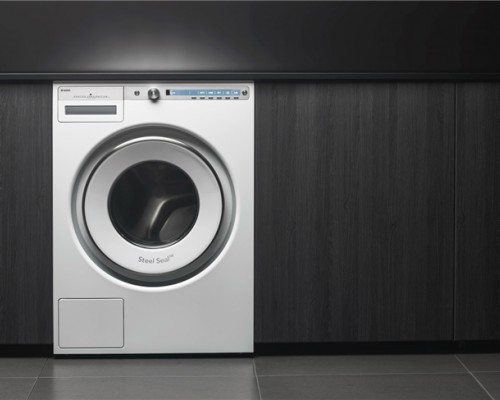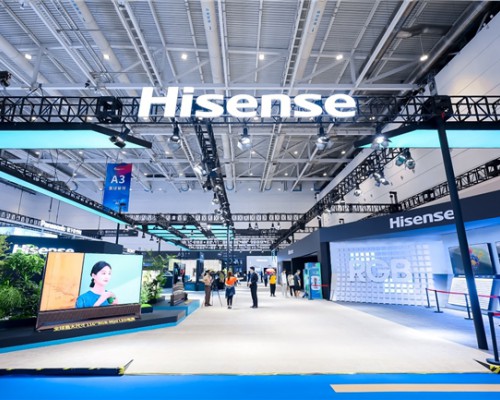ASurveyof Dynamic Spectrum Access
YANG+Shan+CHEN+Peng+LIANG+Lin+ZHU+Jianchi+and+SHE+Xiaoming
In non?orthogonal multiple access (NMA) system, signal transmitter and receiver are jointly optimized, so that multiple layers of data from more than one user can be simultaneously delivered in the same resource. To meet the 5G requirements on the number of connections and spectral efficiency, uplink NMA is becoming an important candidate technology and has been extensively studied in 3GPP. A number of uplink NMA schemes from different industrial companies have been proposed in recent 3GPP meetings. In terms of their basic technique principles, this paper classifies these NMA schemes into three categories, namely: scrambling based NMA schemes, interleaving based NMA schemes, and spreading based NMA schemes. Moreover, the key characteristics of these schemes are summarized, and the detailed introduction of each scheme is provided according to the comprehensive survey of the latest progress in 3GPP 5G standardization work.
5G; non?orthogonal multiple access; scrambling; interleaving; spreading
1 Introduction
n wireless communications, multiple access technology allows several user devices to share one radio transmission resource. Over the past twenty years, the innovation on multiple access technology has been an essential part for each new generation of cellular mobile systems.
Long?Term Evolution (LTE) and LTE?Advanced networks are now being more and more widely deployed by global mobile operators. Meanwhile, the 5G research towards the year 2020 and beyond has been started in the academia and industry worldwide. ITU has defined three usage scenarios including enhanced mobile broadband (eMBB), massive machine type communications (mMTC), and ultra?reliable and low latency communications (URLLC), as well as the key technology capabilities for IMT?2020 (5G) [1]. Moreover, 3GPP launched the study on 5G core network (CN) and radio access network (RAN) in October 2015 and March 2016, receptively [2].
Compared with 4G system, two of the key 5G capabilities are to provide higher connection density and spectral efficiency [1], [3]. As seen in Fig. 1, the 1G to 4G cellular systems are mainly based on orthogonal multiple access (OMA) technologies. In recent years, non?orthogonal multiple access has attracted more and more interests and has become an important candidate technology for 5G system [4], [5].
Non?orthogonal multiple access (NMA) allows the simultaneous transmission of more than one layer of data for more than one piece of user equipment (UE) without time, frequency or spatial domain separation. Different layers of data can be separated by utilizing interference cancellation or iterative detection at the receiver. On one hand, the point?to?point link performance of LTE is quite close to the single UE channel capacity, thus the improvement in link performance would be limited. On the other hand, NMA can be used to further enhance the spectral efficiency over OMA, in order to achieve the multiple UE channel capacity, as shown in the previous research in [6] and [7]. Furthermore, NMA can significantly increase the number of UE connections, which is quite beneficial for MTC services. In addition, NMA does not rely on the knowledge of instantaneous channel state information (CSI) of frequency?selective fading, and thus a robust performance gain in practical wide area deployments can be expected irrespective of UE mobility or CSI feedback latency.
Uplink NMA schemes have been studied in 3GPP RAN WG1 (working group 1) since March 2016. It has been agreed that NMA should be investigated for diversified 5G usage scenarios and use cases [8], and 5G should target to support uplink NMA, at least for mMTC scenario [9].
A number of NMA schemes have been proposed to 3GPP by different industrial companies, including operators, base station (BS) and UE vendors as well as chipset vendors. This paper gives a comprehensive survey on these candidate NMA schemes, and provides an insight on the latest progress in 3GPP 5G standardization work.
The rest of this paper is organized as follows. Section 2 outlines all the candidate NMA schemes submitted to 3GPP. The three categories of NMA schemes, namely scrambling based NMA, interleaving based NMA, and spreading based NMA schemes are presented in Section 3, Section 4 and Section 5, respectively. Conclusions are drawn in Section 6.
2 Uplink NMA Schemes
In an uplink NMA system, signal transmitter and receiver are jointly optimized, so that multiple layers of data from more than one UE can be simultaneously delivered in the same resource (Fig. 2). At the transmitter side, the information of different UEs can be delivered using the same time, frequency and spatial resource. At the receiver side, the information of different UEs can be recovered by advanced receivers such as interference cancellation or iterative detection receivers.
As mentioned above, a number of uplink NMA schemes have been proposed in the recent RAN1 meetings [10]-[21]. The difference of these schemes is mainly on UEs signature design, i.e., whether the scrambling sequence, interleaver or spreading code is used to differentiate UEs. Therefore, these schemes can be classified into the following three categories:
·Category 1: scrambling based NMA schemes
·Category 2: interleaving based NMA schemes
·Category 3: spreading based NMA schemes.
The key characteristics of the three categories are summarized in Table 1. The general descriptions on the 12 candidate schemes are given in Table 2, while the detailed introduction is provided in Section 3 to Section 5.
3 Scrambling Based NMA Schemes
As discussed in Section 2, a key characteristic of scrambling based NMA schemes is that different scrambling sequences are used to distinguish different UEs, and that an successive interference cancellation (SIC) algorithm is applied at the BS receiver to separate different UEs information. In the following, we will introduce three typical scrambling based NMA schemes proposed in 3GPP 5G study phase.
3.1 Non?Orthogonal Multiple Access (NOMA)
In NOMA, the improvements in UE spectral efficiency and the number of connection can be expected by sharing the same radio resources among multiple UEs and allocating more radio resource per UE (Fig. 3 [10]). These multiplexed UEs can be separated by assigning different scrambling sequences to different UEs and creating received power difference among paired UEs. An advanced baseband demodulation receiver, e.g., SIC receiver, is employed at the receiver side as shown in Fig. 4. Note that the received power difference can be created through either large?scale channel difference or small?scale channel variance, i.e., NOMA is also applicable for multiple UEs with similar wideband signal to interference plus noise ratio (SINR) thanks to the variation in small?scale channel.
3.2 Resource Spread Multiple Access (RSMA)
In RSMA, a group of different UEs signals are super?positioned on top of each other, and each UEs signal is spread to the entire frequency/time resource assigned for the group [11]. Different UEs signals within the group are not necessarily orthogonal to each and could potentially cause inter?UE interference. Spreading of bits to the entire resources enables decoding at a signal level below background noise and interference.
RSMA uses the combination of low rate channel codes and scrambling codes (and optionally different interleavers) with good correlation properties to separate different UEs signals. Depending on application scenarios, the RSMA to be discussed includes:
·Single carrier RSMA: optimized for battery power consumption and coverage extension for small data transactions by using single carrier waveforms and very low peak to average power ratio (PAPR) modulations. Moreover, an asynchronous access is potentially allowed in this case.
·Multi?carrier RSMA: optimized for low latency access for radio resource control (RRC) connected state UEs (i.e., timing with BS already acquired).
In Fig. 5 that shows these two modes, “TDM pilot insertion” indicates inserting pilot which is time domain multiplexing(TDM) with the data, “Option CP” indicates that cyclic prefix (CP) is optional for single carrier RSMA, “IFFT” indicates the inverse fast Fourier transform( IFFT) operation, which is similar to that used in LTE.
RSMA will prioritize the usage of low rate channel codes to fully leverage the coding gain, except in the very low spectral efficiency region where capacity scales linear with power and repetition accounts for most of the gain. Also, the SIC receiver is used at the receiver side. For scrambling, the uplink scrambling sequence designed for uplink WCDMA system can be reused.
3.3 Low Code Rate and Signature Based Shared Access
(LSSA)
In LSSA (Fig. 6), each UEs information is encoded with very low rate channel coding [12]. The channel encoding part can be optionally replaced with slightly higher channel coding rate with non?orthogonal spreading sequence. Then the output of channel encoder is bit or symbol level multiplexed with UE specific signature.
A UEs signature is a set that consists of complex or binary sequence and permutation pattern of a short length vector. The short length signature vector, however, does not mean that the number of multiplexed uplink UEs is limited to the length of the signature. UE overloading feature can well be supported since the receiver separates the targeted UE signal from other UEs contribution to multi?UE interference without relying on orthogonal multiplexing codes.
4 Interleaving Based NMA Schemes
The key characteristic of interleaving based NMA schemes is that different interleavers are used to distinguish different UEs, and a low code rate forward error correction (FEC) can be applied together. At the receiver side, an elementary signal estimator (ESE) with or without iteration is used [22], and maximum a posteriori (MAP)/message passing algorithm (MPA) can also be used if there exists zero entries. In the following, we will introduce two typical interleaving based NMA schemes proposed in 3GPP 5G study.
4.1 Interleave Division Multiple Access (IDMA)
IDMA was proposed in [22], which originally targeted to the performance enhancement for asynchronous code division multiple access (CDMA) system. Further studies revealed that IDMA exhibits strong robustness against asynchronicity and tolerance upon UEs overloading. Meanwhile, the IDMA receiver, denoted as ESE and recognized in literature, turns out to be simple and effective.
In Fig. 7, a scenario for performance comparison between frequency division multiple access (FDMA) and IDMA is presented [13]. In the FDMA scheme, each UE is allocated to a relatively narrow frequency bandwidth F/K, considering an FEC rate Rc and temporal frame?length T, and mapping MF bits to a modulated symbol. The achievable throughput per UE is Rc MF (F/K×T). In the IDMA scheme, all of the UEs are allowed to share the complete bandwidth F, by reducing the FEC rate to Rc/K, optionally deploying MI bits to a modulated symbol and a repetition code with rate Rr. The achievable throughput per UE is thus Rc/K MIRr (FT).
4.2 InterleaveGrid Multiple Access (IGMA)
Basically, this IGMA scheme could distinguish different UEs on the basis of:
·Different bit?level interleavers
·Different grid mapping patterns
·Different combinations of bit?level interleaver and grid mapping pattern.
The typical transmitter system structure using IGMA is shown in Fig. 8 [14].
The channel coding process can be either using simple repetition (or spreading) of a moderate coding rate FEC or directly using low coding rate FEC. The sufficient source of bit?level interleavers and/or grid mapping patterns is able to provide enough scalability to support different connection densities, and also provide flexibility to achieve good balance between channel coding gain and benefit from sparse resource mapping. By proper selection, the low correlated bit?level interleavers could be achieved.
In the grid mapping process, sparse mapping based on zero padding and symbol?level interleaving is introduced, which could provide another dimension for UE multiplexing (Fig. 9). Moreover, the densityof the grid mapping pattern is defined as the occupied resource elements(REs)dividing the total assigned REs, i.e., . Different densities could be flexibly configured. It is noted that the symbol sequence order will be randomized after the grid mapping process due to symbol?level interleaving. This may further bring benefits in terms of combating frequency selective fading and inter?cell interference in comparison with resource mapping using direct code?matrices/codebooks.
At the receiver side, the low complexity multi?UE detector, i.e., ESE, takes advantage of the special property of interleaving [22], and can be utilized with a simple de?mapping operation on the top. Note that lower density of the grid mapping pattern could further reduce detection complexity of ESE for IGMA. In addition, MAP and MPA detectors are applicable for IGMA and they can significantly improve the detection performance in comparison to ESE at the cost of complexity. The complexity of MAP/MPA for IGMA can probably be alleviated when sparse grid mapping is used, due to the similar property of low density signature (LDS).
5 Spreading Based NMA Schemes
The key characteristic of spreading based NMA schemes is that different spreading codes are used to distinguish different UEs. Depending on whether there exist zero entries in the spreading code, spreading based NMA schemes can be further classified into two sub?categories, i.e., the LDS based and non?LDS based. For LDS spreading based NMA schemes, an MPA or belief propagation (BP) receiver is usually employed; while for non?LDS spreading based NMA schemes, SIC or parallel interference cancellation (PIC) is applied at the receiver. Organized into these two groups, seven typical spreading based NMA schemes proposed in 3GPP 5G study are presented in this section. More specifically, LDS spreading based NMA schemes include sparse code multiple access (SCMA), pattern defined multiple access (PDMA), low density signature ? signature vector extension (LDS?SVE).
Non?LDS spreading based NMA schemes consists of multiple user shared access (MUSA), non?orthogonal coded access (NOCA), non?orthogonal coded multiple access (NCMA), low code rate spreading (LCRS).
5.1 SCMA
Fig. 10 illustrates a basic system model with SCMA [23], [24] where the coded bits of a data stream are directly mapped to a codeword from a built codebook according to a multi?dimensional constellation. As can be seen in Fig. 10, the basic structure of SCMA implementation would be similar to LTE transmission model, with a key difference of joint design of modulation and spreading [15]. SCMA utilizes low density spreading, also named as sparse spreading, which has been used in the LDS technique in CDMA system. An introduction of multi?dimensional modulation for 5G New Radio (NR) can be found in [25].
The SCMA mapping and multiple access procedures are explained as follows.
1) Codebook mapping
Similar to LTE, SCMA supports layer mapping, i.e. one or multiple SCMA layers can be assigned to a data stream. Different from LTE, the SCMA also conducts mapping from information bits to codewords at each SCMA layer, i.e. the SCMA modulator maps input bits to a complex multi?dimensional codeword selected from a layer?specific SCMA codebook. SCMA codewords are sparse, i.e. only few of their entries are non?zero and the rest are zero. All SCMA codewords corresponding to a SCMA layer have a unique location of non?zero entries, referred to as sparsity pattern for simplicity.
Fig. 11 shows an example of a codebook set containing 6 codebooks for transmitting 6 data layers. As can be seen, each of the codebook has 8 multi?dimensional complex codewords that correspond to 8 points of constellation, respectively. The length of each codeword is 4, which is the same as the spreading length. Upon transmission, the codeword of each layer is selected on the basis of the input bit sequence.
2) Multiple access procedure
Fig. 12 shows an example of multiple access of 6 UEs with the SCMA layer?specific codebooks illustrated in Fig. 11. Each UE is assigned with one SCMA codebook. In the example, UE i takes codebook for layer i, i = 1, 2, …, 6. After the FEC encoder, each UEs coded bits are then mapped to the SCMA codeword according to its assigned codebook. The SCMA codewords are further combined over OFDM tones and symbols are transmitted in terms of SCMA blocks, similar to resource block concept in LTE.
The main characteristics of multiple access with SCMA can be summarized as follow:
·Code domain non?orthogonal signal superposition: It allows superposition of multiple symbols from different UEs on each RE. For example, in Fig. 12, on RE 1, symbols from UE 1, 3, and 5 are overlapped with each other. The superposition pattern on each RE can statically be configured or semi?statically.
·Sparse spreading: SCMA uses sparse spreading to reduce the number of symbol collisions. For example, in Fig. 12, there are 3 symbols from different UEs are colliding over each RE, instead of 6 in the case of non?sparse spreading.
·Multi?dimensional modulation: SCMA uses multi?dimensional modulation instead of linear spreading as in CDMA [25].
5.2 PDMA
A code is used to define sparse mapping from data to a group of resources. The code could be represented by a binary vector. The dimension of the vector equals to number of resource in a group. Each element in the vector corresponds to a resource in a resource group. A ‘1 means that data shall be mapped to the corresponding resource. Actually, the number of ‘1 in the code is defined as its transmission diversity order. A code matrix is constructed by all codes sharing on the same resource group. BP based iterative detection and decoding (BP?IDD) is applied at the receiver.
Assuming six users multiplexing on four REs, Fig. 13 shows an example of code matrix and related resource mapping. User 1s data is mapped to all four resources in the group, and user 2s data is mapped to the first three resources, etc. The order of transmission diversity of the six users is 4, 3, 2, 2, 1, and 1 respectively.
It can be seen that a code with heavier weight (i.e., number of ‘1 elements in the pattern) provides higher diversity order, more reliable data transmission can be anticipated, and detection complexity is also increased. Moreover, codes shall have as many different diversity orders as possible to fasten convergence of BP receiver.
5.3 LDSSVE
LDS?SVE is also one type of LDS spreading based NMA schemes. The main difference of LDS?SVE from the basic LDS spreading based NMA schemes is to consider UE signature vector extension, e.g., transforming and concatenating two element signature vectors into a larger signature vector for LDS spreading. Moreover, the MPA receiver is applied at the BS receiver side.
To combat inter?UE interference or collision, there is actually implicit information dependency, i.e., some kind of information replication within one UE signature vector. Typically, a UE transmits a block of signature vectors; If dependency can be further introduced among these vectors, more robustness against inter?UE interference or higher order of diversity can be obtained. UE signature vector extension is one way to achieve this. The extension can be accomplished by transforming and concatenating e.g. two element signature vectors into a larger signature vector. Assuming LDS type of multiple access, (1) shows an example of UE signature vector extension. Define as a real number vector obtained by stacking the real and imaginary parts of signature vector 1 and vector 2 into one column. Similarly, define as a real number vector obtained by stacking the real and imaginary parts of the extended UE signature vector . UE signature vector extension can be achieved by multiplying with a transformation matrix .
. (1)
5.4 MUSA
MUSA is a non?orthogonal multiple access scheme operating in the code domain. Conceptually, each UEs modulated data symbols are spread by a specially designed sequence which can facilitate robust SIC implementation compared to the sequences employed by traditional direct?sequence CDMA(DS?CDMA). Then each UEs spread symbols are transmitted concurrently on the same radio resource by means of shared access, which is essentially a superposition process. Finally, decoding of each UEs data from superimposed signal can be performed at the BS side using SIC technology.
By determining the interference between different UEs and system performance, the design of spreading sequence is crucial to MUSA. The spreading sequences should have low cross?correlation and can be non?binary.
For MUSA, a family of complex spreading sequence can be studied to achieve relatively low cross?correlation at very short length. The complex sequence exhibits lower cross?correlation than traditional pseudo random noise (PN) due to the utilization of additional freedom of the imaginary part. The real and imaginary parts of the complex element in the spreading sequence are drawn from a multi?level real value set with uniform distribution. For example, for a 3?value set {?1, 0, 1}, every bit of the complex sequence is drawn from the constellation depicted in Fig. 14 with equal probability.
5.5 NOCA
Similarly with other spreading based NMA schemes, the basic idea of NOCA is that the data symbols are spread using non?orthogonal sequences before transmission. The spreading can be applied in frequency domain and/or time domain based on configuration. The basic transmitter structure of NOCA is shown in Fig. 15, where SF denotes the spreading factors and Cj is the spreading sequence of the jth UE. The original modulated data sequence is first converted into P parallel sequences, then each sequence is mapped onto SF subcarriers. The total number of subcarriers is therefore PSF for transmitting the data stream.
The sequences used for NOCA shall have good properties like constant modulus, good auto?correlation and cross?correlation, and low memory and complexity requirements. Multiple spreading factors for flexible adaptation might also be supported in this scheme. As a starting, the sequences could be LTE defined sequences for uplink reference signal for 1 RB case, and the spreading factor equals to 12 [26]. For the case in which the spreading factor equals to 12, there are 30 available roots as specified for LTE system; therefore, together with 12 available cyclic shifts for each root, the number of available sequences for spreading is 360. Besides, these sequences are QPSK sequences, and thus have constant modulus and low cubic metric.
5.6 NCMA
For NMA, multi?UE interference is inherently induced. NCMA is proposed to minimize the multi?UE interference theoretically, based on the spreading codes with the minimum correlation. NCMA is a NMA scheme based on the resource spreading by using non?orthogonal codewords, which is composed of the codewords obtained by Grassmannian line packing problem [27].
The transceiver structure of NCMA is illustrated in Fig. 16, where the UE specific non?orthogonal code cover (NCC) represents a non?orthogonal codeword allocated to each UE.
NCMA can provide the additional throughput or improved connectivity with a small loss of block error rate (BLER) in specific environments, by exploiting additional layers through superposed symbol. It can also satisfy quality of service (QoS) constraints. Since the receiver of NCMA system is available for PIC, the multi?UE detection can be implemented with low complexity.
5.7 LCRS
The basic idea of LCRS is to spread information bits over the entire non?orthogonal transmission zone with repetition and rate matching, i.e. combining channel coding with spreading via low rate codes to maximize the coding gain. In this case, a UE?specific channel interleaver [22] can be further employed for improved multi?UE signal separation at the receiver. Fig. 17 shows a block diagram of transmitter processing at the UE.
6 Conclusions
Uplink NMA is identified as an important candidate 5G technology to provide higher spectral efficiency and support connection of more user devices. Based on the latest standardization progress, this paper gives a comprehensive survey on the twelve NMA schemes being considered in 3GPP. As a matter of fact, extensive investigations on these NMA schemes are still ongoing in 3GPP and it is believed that only one or a few NMA schemes will be selected to the final stage of the 5G New Radio (NR) standard according to the consensus reached among the individual members of 3GPP organization.







